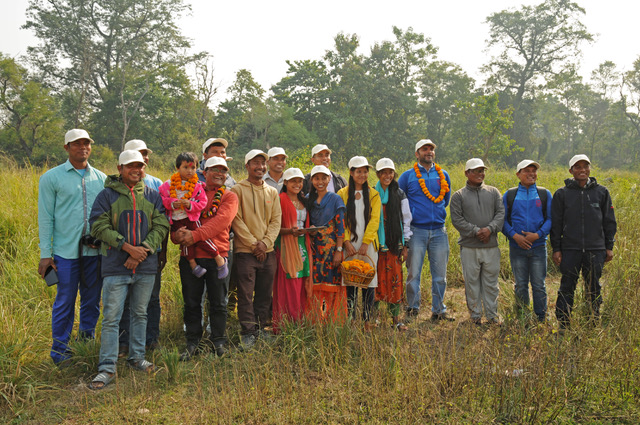Human-wildlife coexistence
Increasing efforts to conserve fragmented habitats and forest corridors in Western Nepal have resulted in a growing population of wild elephant of more than 120 individuals. This makes human settlements around protected areas and corridors vulnerable to elephants. Frequent crop raiding happens repeatedly causing human causalities because of agitative elephants attacking people.



A growing number of tigers in the park and concomitant agricultural development and urbanization in the adjacent buffer zones are resulting in an increasing number of human wildlife conflicts. To sustain general acceptance of wildlife conservation by the local communities, it is essential to mitigate such conflicts. This requires a better understanding of human tiger conflicts. This issue is being studied both in the Bardiya and Chitwan National Parks, by Subodh Upadhyaya and Babu Ram Lamichhane respectively.
To support human wildlife coexistence in Bardiya, NTNC and the Buffer Zone Users Committees are implementing “HWC management in the Western buffer zone of Bardiya National Park”. This program comprises the following:
Electric fencing
People in Geruwa Rural Municipality and the Khata corridor are most impacted by wildlife. Agricultural areas are protected by a specific electric fence against elephant attacks. Operation and maintenance of these electric fences are the responsibility of the local communities.




Behaviour Change Awareness Campaigns
To strengthen human wildlife cohabitation, it is necessary to change the behaviour of people living close to the park and corridor. They are being informed about tiger behaviour and how to avoid encounters. People are also trained how to behave in case an elephant is breaching the electric fence to avoid agitation.
For the behaviour change awareness campaigns and field gear support HTF received generous financial support from the Sirtema Stichting and Wilde Ganzen, two Dutch foundations.

Field Gear Support
NTNC has trained and mobilized local ‘change agents’. They carry out the behaviour change awareness campaigns and workshops on fence O&M for local communities, farmers, and herders. These volunteers are provided with basic materials such as bicycles, raincoats, boots, torch lights, etc.
To read more about the research projects we have initiated in Bardiya National Park, click on:
Managing subtropical monsoon grasslands
Counting prey animals
Climate change
Re-wilding Bardiya National Park
Mountain Tiger (Snow Leopard)
“Save the Tiger! Save the Grasslands! Save the Water!”

